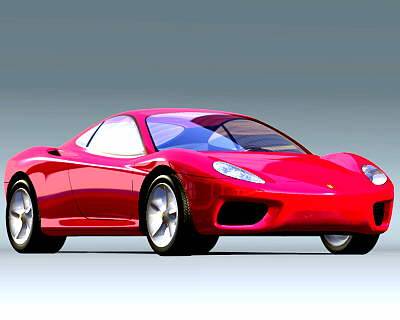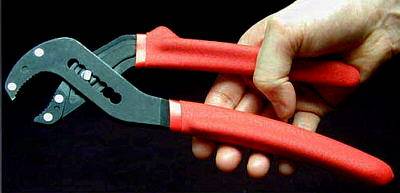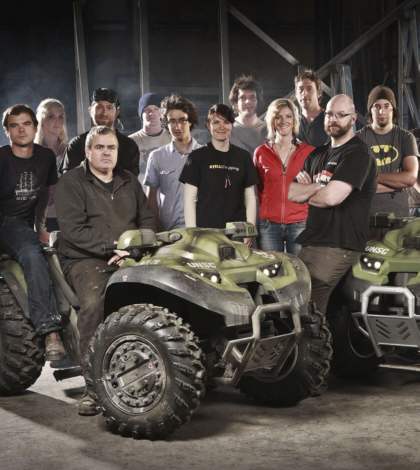When the Olympic torch lit the flame to mark the start of the Sydney 2000 Olympic Games in September 2000, the entire nation celebrated as the Olympics returned to Australia for the second time.
Certainly nobody felt the euphoria more than the design team at Blue Sky who created the torch. The winning design was unveiled to the world’s press on March 8 1999, but the hard work began almost 18 months earlier when senior designer Robert Jurgens and creative director Mark Armstrong began the process of responding to the SOCOG (Sydney 2000 Organising Committee for the Olympic Games) invitation to tender. 40 firms were invited to participate in the tender to design and manufacture the Olympic torch and community cauldrons.
The brief given to the designers was very detailed and very exacting in its requirements. The designers had to conceive a product that weighed no more than 1.5 kilos and stay alight for the required twenty minute run, be environmentally responsible in its manufacture and operation. The brief gave emphasis to ergonomic considerations and set a manufacturing budget and production delivery schedule for the 14,000 torches required.
 The Sydney Torch Relay is the longest in Olympic history and transports the sacred flame from Athens in Europe through to the Pacific region and finally to within one hour’s drive of every Australian. This mammoth logistical exercise will put the torch through a very diverse range of environmental conditions including desert heat, sub zero alpine conditions and tropical winds and storms. The torch must perform well in a range of different transport situations including camel, tram, boats and bicycles.
The Sydney Torch Relay is the longest in Olympic history and transports the sacred flame from Athens in Europe through to the Pacific region and finally to within one hour’s drive of every Australian. This mammoth logistical exercise will put the torch through a very diverse range of environmental conditions including desert heat, sub zero alpine conditions and tropical winds and storms. The torch must perform well in a range of different transport situations including camel, tram, boats and bicycles.
Adelaide University in conjunction with FCT, an international combustion specialist, were commissioned separately by SOCOG to develop a uniquely Australian burner for the torch that would satisfy the requirements of the brief.
From the outset the Blue Sky strategy when accepting the invitation to tender was simply “to win”. It is part of our normal design process in any Industrial design project to assemble a multi-disciplined team to respond to a design brief and the torch project was handled in the same way. We enlisted the support of Chris Ryan from RMIT’s Centre for Design to provide the highest level of environmental support to the design team. GA & L Harringtons, as ISO accredited Australian manufacturer, joined the consortium bringing a reputation for quality high volume manufacturing. Alan Isamy from Box & Dice Pty Ltd contribute his model making and skills to the team.
Coming second in a tender of this type is a very expensive exercise so we adopted a strategy to analyze the types of solutions that would inspire an appeal to the judging committee as well as achieving the requirements of the brief. Our research phase included an understanding of the history and tradition associated with the Torch relay and we examined in detail previous torches of the modern Olympic era. We searched for inspiration in our built environment, including icons such as the opera house and the beautify Sydney Harbor. The resultant research phase produced a series of inspirational boards that helped formulate the four design options submitted in the first round of submission to SOCOG.
 The first round design submissions were modeled using Alias|Wavefront software on SGI hardware. The 3D surface files were rendered in high resolution and life-like flames were added in Photoshop for the presentation to SOCOG. The same files were e-mailed to Box & Dice Pty Ltd to produce a high quality appearance model to evaluate ergonomic aspects and surface finishes.
The first round design submissions were modeled using Alias|Wavefront software on SGI hardware. The 3D surface files were rendered in high resolution and life-like flames were added in Photoshop for the presentation to SOCOG. The same files were e-mailed to Box & Dice Pty Ltd to produce a high quality appearance model to evaluate ergonomic aspects and surface finishes.
After the tender closed we waited anxiously with our partners as did all the other participants for some word regarding our submission. It came within 2 weeks and we were delighted to hear we had been short-listed with three other firms to make a presentation to the Torch Review Committee. Blue Sky concluded that Robert Jurgen’s boomerang layered design would stand us the best chance of winning, and so we concentrated on refining the various technical aspects of this torch direction. After further presentations to SOCOG and its board, it was announced that the Blue Sky torch would be used at the Sydney 2000 Olympic Games.
ogether with GA & L Harrington, Blue Sky set the manufacturing process in motion. Harringtons developed and refined the manufacturing processes and worked closely with the other partners to bring the torch to fruition. For us at Blue Sky, the project has been very special and quite uplifting The team just “clicked” and each member from the designers to the production engineers have demonstrated a passion for the project which is quite extraordinary.
The Olympic Torch
 The Sydney 2000 Olympic Torch comprises three main components. Its form recalls the shells of the Sydney Opera House and the subtle curve echoes that of the boomerang.
The Sydney 2000 Olympic Torch comprises three main components. Its form recalls the shells of the Sydney Opera House and the subtle curve echoes that of the boomerang.
- The outer shell is powder coated and cubic-printed, pressed aluminium.
- The middle shell is fluoro-blue anodized aluminium.
- The inner shell is stainless steel with a stainless steel burner and copper gas lines. It also contains the gas cylinder and operating controls.
The Olympic Torch is a unique opportunity for Australian designers and manufacturers to demonstrate our creative and technical competence to the world and to make a contribution to Olympic history and add a uniquely Australian element to the torch relay.
Blue Sky is a Sydney based design consultancy with a broad range of clients including local appliance manufacturers and global corporations including Philips Electronics, Ryobi Japan and Cochlear. The company employs Industrial Designers, Graphic Designers, Mechanical Engineers and Multi Media Specialists.








